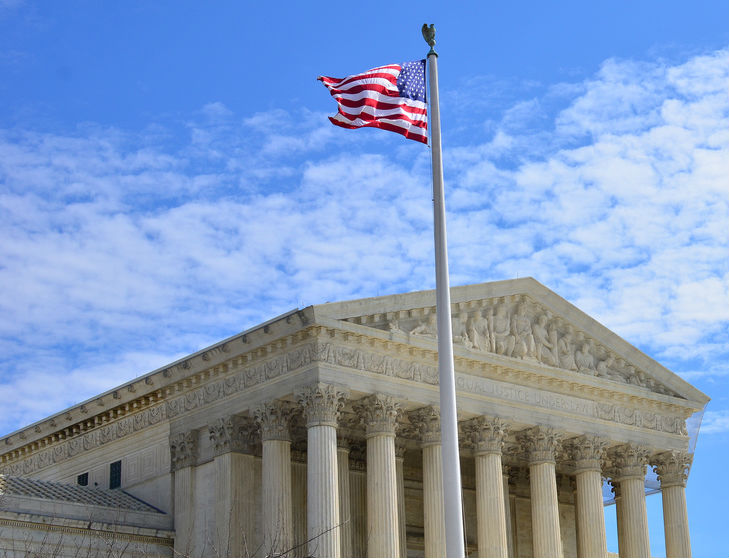 More than two years after U.S. Supreme Court decisions started throwing out mandatory death and life sentences for minors, judges in Washington, Illinois and dozens of other states still lack guidance on what to do with juveniles past and present convicted of murder and some other serious felonies.
More than two years after U.S. Supreme Court decisions started throwing out mandatory death and life sentences for minors, judges in Washington, Illinois and dozens of other states still lack guidance on what to do with juveniles past and present convicted of murder and some other serious felonies.
“Courts are uncomfortable in trying to figure out what ‘life’ means in terms of years,” said Kimberly Ambrose, senior law lecturer at the University of Washington School of Law. She represented Guadalupe Solis-Diaz at the state’s Court of Appeals, arguing against a 92-year sentence he’s serving for six counts of first-degree assault and other charges for his role in a drive-by shooting. The then 16-year-old Solis-Diaz fired into a crowd in Centralia, Wash., in 2007, though did not injure his target or anyone else.
It’s not clear in Washington if those 92 years are equivalent to what the U.S. Supreme Court calls “life” sentences. The federal high court has definitively thrown out state sentencing laws that mandate life without parole for juveniles. Beginning with the 2005 Roper v. Simmons case and more recently with Graham v. Florida in 2010 and Miller v. Alabama in 2012, the court says that juveniles are not yet fully mentally developed, are less culpable and more capable of reform. Therefore, lower court judges must consider those and other mitigating factors when sentencing juveniles for both homicide and non-homicide offenses.
Solis-Diaz’ counsel at his original sentencing failed to mention that U.S. Supreme Court trend. That omission, said the state appeals court, was one of several mistakes that contributed to their decision this month to throw out Solis-Diaz’ 92 years, on grounds of ineffective counsel.
“This is the first life-equivalent case to come before a Washington appellate court,” said Ambrose, speaking of non-homicide offenses.
But the court also noted it would not opine on any other sentence for Solis-Diaz.
“The legislature is the appropriate body to define crimes and fix punishments. To the extent that Graham suggests that an opportunity for parole must be available for juvenile offenders convicted of non-homicide offenses, only the Legislature has the authority to amend the SRA [Sentencing Reform Act] to allow for such remedy,” the opinion reads.
They remanded the case for resentencing.
Many judges are grappling with how to amend their current laws to comply with the U.S. Supreme Court rulings on juvenile sentences. Some state legislatures have yet to update laws to comply with the two-year-old Graham case. And most state legislatures have been closed since the June, 2012 Miller decision, so have had no chance to start thinking about it. Thus judges dealing with juveniles convicted of murder must figure out if it would apply to juvenile offenders sentenced before it, and how to handle appeals, all without legislative guidelines.
“There’s lot of people trying to figure out what to do and how to proceed, and if it [Miller] would apply retroactively,” said Randolph Stone, a law professor at the University of Chicago.
The answers so far vary by state.
More than 100 people have been sentenced to life without chance of parole in Illinois for crimes committed as minors, according to a 2010 report by the National Conference of State Legislatures. Nationally, there are more than 2,500 juvenile offenders who have received this sentence in the states that did or do allow it, according to The Campaign for Fair Sentencing of Youth, an advocacy group.
“Does each of those people get a new hearing? If so, what sort of sentence will they be facing?” Stone asked.
He argued that because the Miller decision was bundled with one out of Arkansas, which relieved a defendant convicted for a crime he committed in 1999, juvenile offenders nationwide who had already been sentenced before the decision should have a chance for a new trial and sentencing.
“It’s a question of whether it will be decided on a case-by-case basis or a broad remedy that can be fashioned to deal with them all at the same time” he said.” I think it’s pretty clear that it does [apply retroactively], although the prosecutors are saying that it doesn’t.”
Michigan’s Supreme Court declined to settle retroactivity in its state this month. Attorney General Bill Schuette asked the Court to rule out retroactivity on the life sentence of a man convicted of participating in an armed robbery as a 16-year-old. Instead, the court remanded the case for resentencing.
One prosecutor who’s agreed to applying Miller to one existing conviction is New Hampshire’s Senior Assistant Attorney General Jeffery Strelzin. Steven Spader was 17 when he hacked to death a woman in her home. In 2010, he was given his state’s mandatory sentence: life in prison. The court also added 76 years on other charges.
“Spader is the only defendant who has filed anything in court. We have agreed that he will be resentenced in light of the Miller decision,” said Strelzin.
“Four other defendants have indicated they may contest the applicability of Miller to their cases. However, none have filed any motions in court yet asking for a new sentencing hearing,” he said.
Spader’s case was still on appeal when Miller was published. Pennsylvania’s Supreme Court is hearing a similar case.
If the definition of “life” sentences varies by state, so does the definition of “juvenile.” In Illinois, 17-year-olds facing felony charges are tried as adults, and children ages 15 and older charged with first- degree murder and other felonies, such as robbery at gun-point, are automatically transferred to adult court.
And an accountability statue in Illinois often leads courts to treat accomplices with the same degree of culpability as the shooter.
Illinois has to wrangle with a decade-old ruling by its state Supreme Court that foretold the later U.S. ruling, but may also preclude it being retroactive.
The court shot down a mandatory life sentence for a 15-year-old who had served as a lookout for two people convicted of homicide. The court wrote that under the state’s automatic transfer, accountability, and sentencing statutes, “a court never considers the actual facts of the crime, including the defendant's age at the time of the crime or his or her individual level of culpability.”
Matt Jones, of the state’s Attorneys Appellate Prosecutor’s office, said that mandatory sentencing for juveniles was already shot down in Illinois with this decision, and that courts had abstained from the practice since then, except in the case of 17-year-olds, who were still tried as adults.
But he also said the ruling made it clear that it shouldn’t be applied retroactively, and that he doesn’t think the Supreme Court’s decision in June will be applied retroactively either.
Stone argues the opposite, that the Illinois Supreme Court’s decision only applied to that specific case, and that courts throughout Illinois still maintained mandatory sentencing for minors convicted of homicide. He said that a new bill or amendment to the Illinois Code of Corrections must be made to comply with the Supreme Court’s ruling.
The U.S. Supreme Court rulings do not talk about such details. But juvenile rights advocates hail the principle.
“These [mandatory sentencing] laws make it difficult for judges,” said Shobha Mahadev, a Northwestern University law professor. “The decision is taken out of the judge’s hand. We have to change the way we treat children and change these laws.”
The Illinois Legislature may take the question up when it reconvenes in November. Ambrose expects it to be an issue in Washington as well. Pennsylvania legislators have already held hearings on a rewrite.
